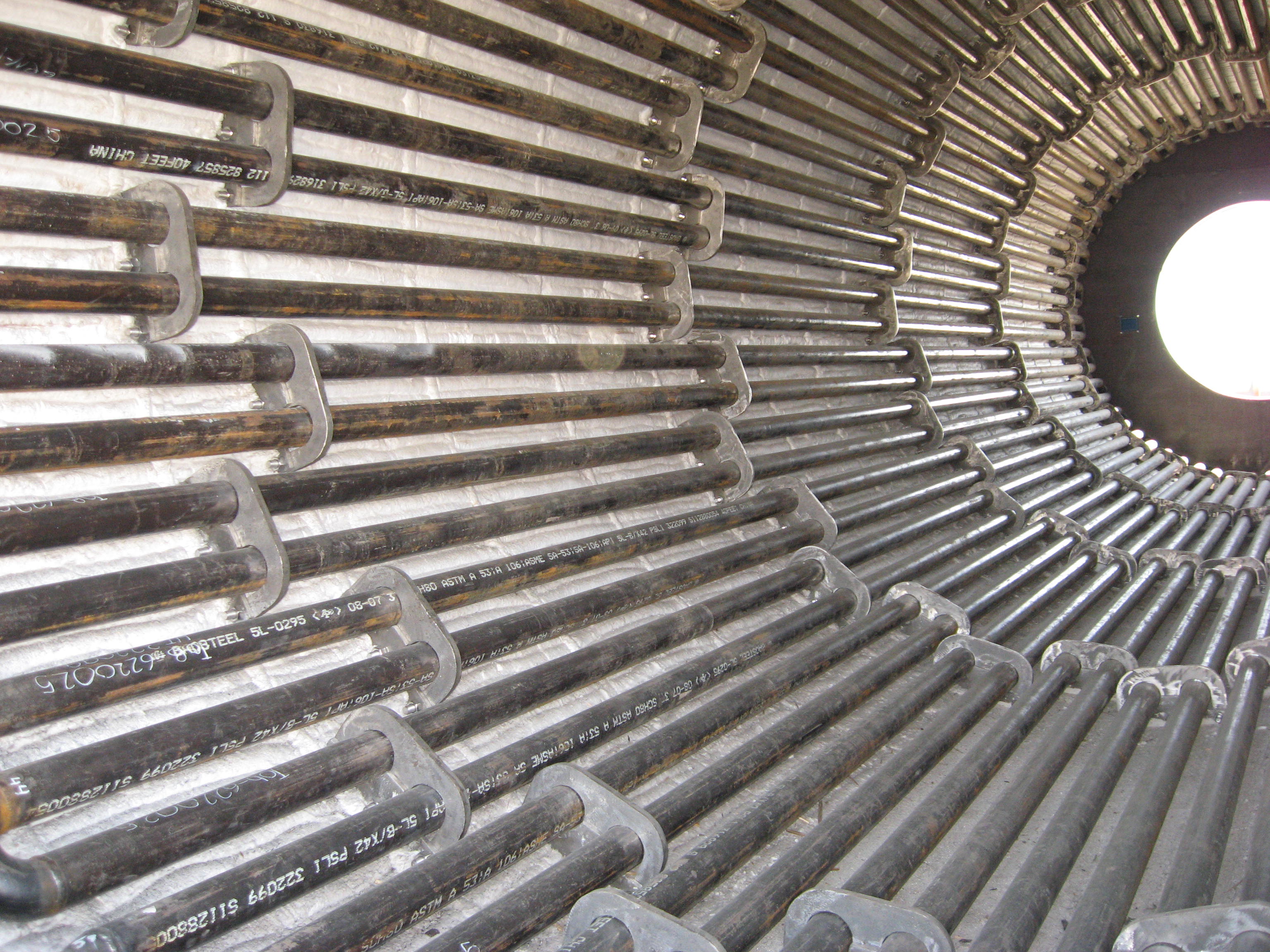Tank and Vessel Internals

Vessel internals are the components or structures that are installed inside a pressure vessel or storage tank to perform specific functions or serve various purposes. Pressure vessels are containers designed to hold gases or liquids at different pressures and temperatures. Vessel internals are crucial for ensuring the safe and efficient operation of these vessels.
The choice of vessel internals depends on the specific process requirements and the type of pressure vessel or storage tank being used. Properly designed and installed internals are essential for achieving desired process outcomes, maintaining safety, and ensuring the longevity of the vessel.
Tank and Vessel Internals Types
Tray - These are perforated or solid plates installed horizontally inside a vessel to facilitate mass transfer processes like distillation, absorption, or stripping. They help separate and distribute fluids within the vessel.
Packing - Packing materials, such as structured or random packing, are used in towers and columns for gas-liquid contact in processes like distillation, absorption, and scrubbing. They increase the surface area for mass transfer.
Demister Pad - These are used to remove entrained liquid droplets from a gas stream. They are often used in gas-liquid separation applications to improve the quality of the separated gas.
Baffle - Baffles are vertical or horizontal plates or structures used to direct the flow of fluids inside a vessel. They help control fluid circulation and prevent swirling, which can lead to inefficient mixing or settling of solids.
Distributors - Distributors are used to evenly distribute liquid or gas flow across the vessel cross-section. They are commonly found in packed beds and trayed columns to ensure uniform contact between phases.
Supports and Bracing - These components provide structural support to the vessel and prevent deformation or damage due to internal pressure or external loads.
Liners and Coatings - In some cases, vessel internals may be lined or coated with materials to protect the vessel from corrosion or erosion caused by the process fluid.
Reactor Internals - In chemical reactors, specialized internals like catalyst beds, quench systems, and heat exchangers may be used to control reaction conditions and enhance heat transfer.
Level Gauges and Instruments - These are used to monitor and control the level, pressure, and temperature inside the vessel. They are critical for maintaining safe and efficient operations.
Mixing Elements - In vessels used for mixing and blending processes, various mixing elements like agitators, impellers, or static mixers may be installed to ensure thorough mixing of fluids or solids.
Weir - Used control the flow of fluids or separate different phases within the vessel.
Wave Breaker - A device or mechanism to reduce the impact of internal waves within the vessel's hull. The primary purpose of a vessel internal wave breaker is to minimize the sloshing and rocking motions of the ship caused by these internal waves.
Splash Plate - A component used in various types of industrial equipment, particularly in vessels and tanks. Its primary purpose is to prevent splashing or turbulence inside the vessel.
Vortex Breaker - A component or structure designed and installed within a container or vessel, typically in industrial or chemical processing applications, to prevent the formation of vortexes or swirling flows within the liquid or gas inside the vessel.
Sand Trap - A piece of equipment used in various industries, primarily in the oil and gas sector, to remove sand and other solid particles from the fluid flowing through a pipeline or vessel.
Jets - Jets direct flow rate to help clean out sand or other sediment.
Deciding on the Appropriate Vessel and Tank Internals
Deciding on the appropriate internals involves considering various factors to ensure the efficient and safe operation of the equipment. Here are some steps and considerations to help you make informed decisions.
Understand the Purpose and Process - Clearly define the purpose of the vessel or tank and the process it will be used for. Consider factors such as the type of fluid (liquid or gas), temperature, pressure, and the desired outcome (storage, mixing, separation, etc.).
Design Codes and Regulations - Familiarize yourself with local and international design codes and regulations that govern the construction and operation of vessels and tanks. Common codes include ASME, API, and ASCE.
Material Selection - Choose appropriate materials of construction based on the process requirements. Consider factors such as corrosion resistance, temperature resistance, and material compatibility with the stored or processed fluids.
Internal Components - Determine the necessary internal components based on the process requirements.
Sizing and Placement - Determine the appropriate size and placement of internals within the vessel or tank. This often involves engineering calculations to ensure efficient fluid dynamics, heat transfer, and separation.
Maintenance and Accessibility - Consider how easy it will be to access and maintain the internals. Ensure that there are provisions for inspection, cleaning, and replacement if necessary.
Safety Considerations - Always prioritize safety. Design the vessel or tank internals to minimize the risk of leaks, explosions, or other hazards. This may involve pressure relief devices, venting systems, and emergency shutdown procedures.
Cost Analysis - Evaluate the cost of different internal components, taking into account initial purchase costs, installation costs, and long-term maintenance expenses.
Consult with Experts - If you are unsure about any aspect of vessel or tank internals, consult with experienced engineers, and consider involving a specialized consultant or contractor in the design and selection process.
Documentation and Record Keeping - Maintain thorough documentation of the design, materials, and installation of vessel and tank internals. This documentation is crucial for regulatory compliance and future maintenance.
Testing and Commissioning - After installation, perform testing and commissioning to ensure that the internals function as intended and meet safety and performance criteria.
Remember that the specific requirements for vessel and tank internals will vary depending on the nature of the process and the applicable industry standards. It's essential to conduct a thorough engineering analysis and involve relevant experts to make well informed decisions.


